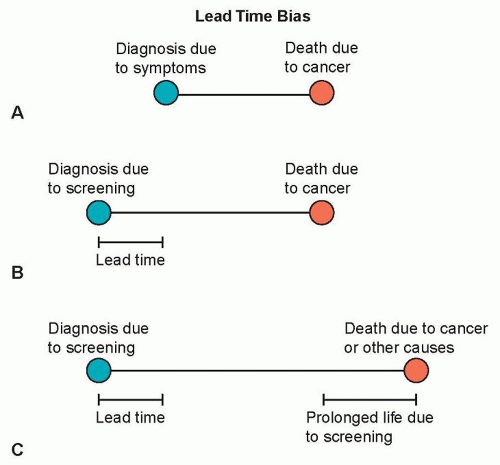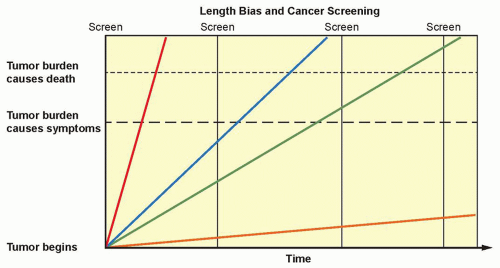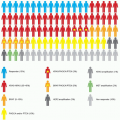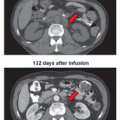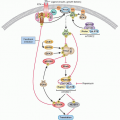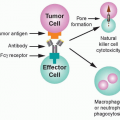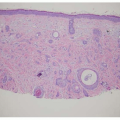Study |
Randomization |
Sample Size |
Intervention and Age at Entry |
Follow-up |
Finding |
Health Insurance Plan, United States 1963a,b |
Individual |
60,565-60,857 |
MMG and CBE for 3 years Age 40-64 years |
18 years |
RR 0.77 (95% CI: 0.61-0.97) |
Malmo, Sweden 1976c,d |
Individual |
42,283 |
Two-view MMG every 18-24 months × 5 Age 45-69 years |
12 years |
RR 0.81 (95% CI: 0.62-1.07) |
Ostergotland (County E of Two-County Trial) Sweden 1977e–g |
Geographic cluster |
38,405-39,034 study
37,145-37,936 control |
Three single-view MMG every 2 years women, Age 40-50 years
Every 33 months women, Age 50-74 |
12 years |
RR 0.82 (95% CI: 0.64-1.05) |
Kopparberg (County W of Two-County Trial) Sweden 1977e–g |
Geographic cluster |
38,562-39,051 intervention
18,478-18,846 control |
Three single-view MMG every 2 years women, Age 40-50 years
Every 33 months women, Age 50-74 years |
12 years |
RR 0.68 (95% CI: 0.52-0.89) |
Edinburgh, United Kingdomh |
Cluster by physician practice |
23,266 study
21,904 control |
Initially, two-view MMG and CBE
Then annual CBE with single-view MMG years 3, 5, and 7, Age 45-64 years |
10 years |
RR 0.84 (95% CI: 0.63-1.12) |
NBSS-1, Canada 1980i,j |
Individual |
25,214 study (100% screened after entry CBE)
25,216 control |
Annual two-view MMG and CBE for 4-5 years, Age 40-49 years |
13 years |
RR 0.97 (95% CI: 0.74-1.27) |
NBSS-2, Canada 1980i,j |
Individual |
19,711 study (100% screened after entry CBE)
19,694 control |
Annual two-view MMG and CBE versus CBE, Age 50-59 years |
11-16 years (mean 13 years) |
RR 1.02 (95% CI: 0.78-1.33) |
Stockholm, Sweden 1981k |
Cluster by birth date |
40,318-38,525 intervention group
19,943-20,978 control group |
Single view MMG every 28 months × 2
Age 40-64 years |
8 years |
RR 0.80 (95%) CI: 0.53-1.22) |
Gothenberg, Sweden 1982d |
Complex |
21,650 invited
29,961 control |
Initial two-view MMG, then singleview MMG every 18 months × 4
Single read first three rounds, then double-read, Age 39-59 years |
12-14 years |
RR 0.79 (95% CI 0.58-1.08)
In the evaluation phase
RR 0.77 (95% CI 0.60-1.00)
In follow-up phase |
Age Triall |
Individual |
160,921
(53,884 invited; 106,956 not invited) |
Invited group aged 48 and younger offered annual screening by MMG (double-view first screen, then single mediolateral oblique view thereafter); 68% accepted screening on the first screen an 69% and 70% were reinvited (81 % attended at least one screen) Age 39-41 years |
10.7 years |
RR 0.83 (95% CI: 0.66-1.04) |
a Shapiro S, Venet W, Strax P, et al. Ten- to fourteen-year effect of screening on breast cancer mortality. J Natl Cancer Inst 1982;69:349-355.
b Shapiro S. Periodic screening for breast cancer: the HIP Randomized Controlled Trial. Health Insurance Plan. J Natl Cancer Inst Monogr 1997:27-30.
c Andersson I, Aspegren K, Janzon L, et al. Mammographic screening and mortality from breast cancer: the Malmo mammographic screening trial. BMJ 1988;297:943-948.
d Nystrom L, Rutqvist LE, Wall S, et al. Breast cancer screening with mammography: overview of Swedish randomised trials. Lancet 1993;341:973-978.
e Tabar L, Fagerberg CJ, Gad A, et al. Reduction in mortality from breast cancer after mass screening with mammography. Randomised trial from the Breast Cancer Screening Working Group of the Swedish National Board of Health and Welfare. Lancet 1985;1:829-832.
f Tabar L, Fagerberg G, Duffy SW, Day NE. The Swedish two county trial of mammographic screening for breast cancer: recent results and calculation of benefit. J Epidemiol Community Health 1989;43:107-114.
g Tabar L, Fagerberg G, Duffy SW, et al. Update of the Swedish two-county program of mammographic screening for breast cancer. Radiol Clin North Am 1992;30:187-210.
h Roberts MM, Alexander FE, Anderson TJ, et al. Edinburgh trial of screening for breast cancer: mortality at seven years. Lancet 1990;335:241-246.
i Miller AB, To T, Baines CJ, Wall C. The Canadian National Breast Screening Study-1: breast cancer mortality after 11 to 16 years of follow-up. A randomized screening trial of mammography in women age 40 to 49 years. Ann Intern Med 2002;137:305-312.
j Miller AB, Wall C, Baines CJ, et al. Twenty five year follow-up for breast cancer incidence and mortality of the Canadian National Breast Screening Study: randomised screening trial. BMJ 2014;348-366.
k Frisell J, Eklund G, Hellstrom L, et al. Randomized study of mammography screening—preliminary report on mortality in the Stockholm trial. Breast Cancer Res Treat 1991;18:49-56.
l Moss SM, Cuckle H, Evans A, et al. Effect of mammographic screening from age 40 years on breast cancer mortality at 10 years’ follow-up: a randomised controlled trial. Lancet 2006;368:2053-2060. |
|







